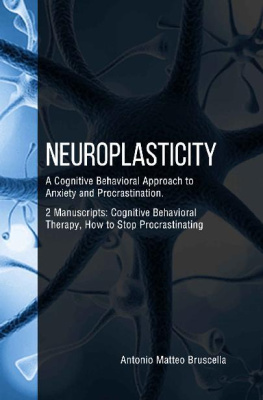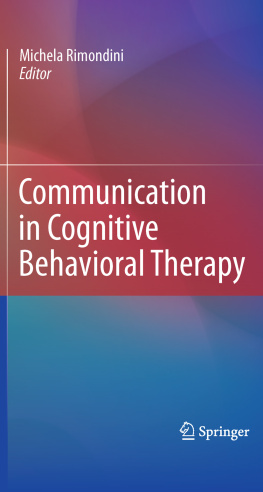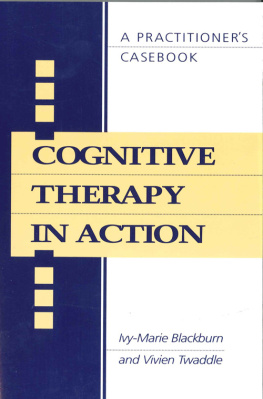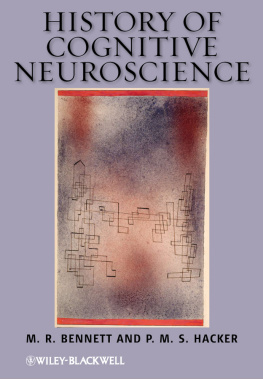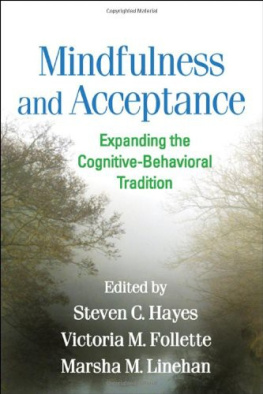Tullio Scrimali - Neuroscience-Based Cognitive Therapy: New Methods for Assessment, Treatment and Self-Regulation
Here you can read online Tullio Scrimali - Neuroscience-Based Cognitive Therapy: New Methods for Assessment, Treatment and Self-Regulation full text of the book (entire story) in english for free. Download pdf and epub, get meaning, cover and reviews about this ebook. genre: Religion. Description of the work, (preface) as well as reviews are available. Best literature library LitArk.com created for fans of good reading and offers a wide selection of genres:
Romance novel
Science fiction
Adventure
Detective
Science
History
Home and family
Prose
Art
Politics
Computer
Non-fiction
Religion
Business
Children
Humor
Choose a favorite category and find really read worthwhile books. Enjoy immersion in the world of imagination, feel the emotions of the characters or learn something new for yourself, make an fascinating discovery.

- Book:Neuroscience-Based Cognitive Therapy: New Methods for Assessment, Treatment and Self-Regulation
- Author:
- Genre:
- Rating:5 / 5
- Favourites:Add to favourites
- Your mark:
- 100
- 1
- 2
- 3
- 4
- 5
Neuroscience-Based Cognitive Therapy: New Methods for Assessment, Treatment and Self-Regulation: summary, description and annotation
We offer to read an annotation, description, summary or preface (depends on what the author of the book "Neuroscience-Based Cognitive Therapy: New Methods for Assessment, Treatment and Self-Regulation" wrote himself). If you haven't found the necessary information about the book — write in the comments, we will try to find it.
Tullio Scrimali: author's other books
Who wrote Neuroscience-Based Cognitive Therapy: New Methods for Assessment, Treatment and Self-Regulation? Find out the surname, the name of the author of the book and a list of all author's works by series.
Neuroscience-Based Cognitive Therapy: New Methods for Assessment, Treatment and Self-Regulation — read online for free the complete book (whole text) full work
Below is the text of the book, divided by pages. System saving the place of the last page read, allows you to conveniently read the book "Neuroscience-Based Cognitive Therapy: New Methods for Assessment, Treatment and Self-Regulation" online for free, without having to search again every time where you left off. Put a bookmark, and you can go to the page where you finished reading at any time.
Font size:
Interval:
Bookmark:
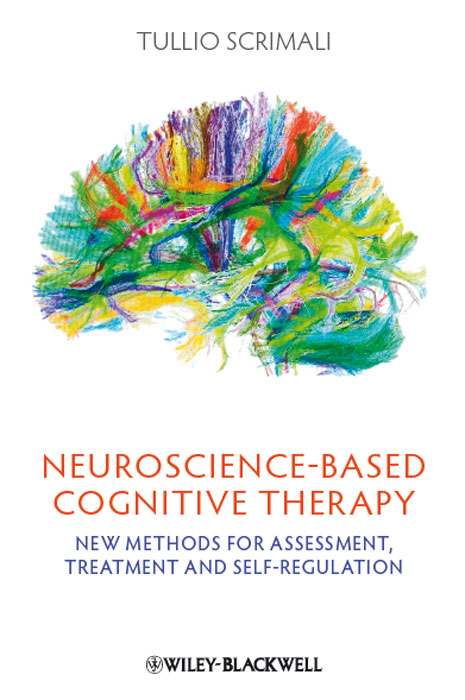
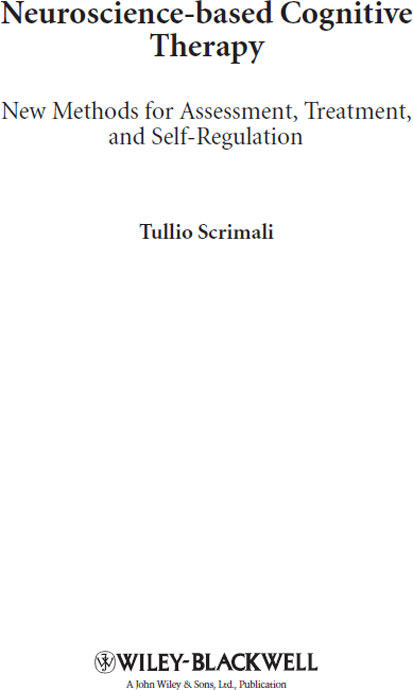
This edition first published 2012
2012 John Wiley & Sons, Ltd.
This book is a revised and extended version of: Scrimali, Tullio (2010) Neuroscienze e Psicologia Clinica. Dal Laboratorio di Ricerca al Setting con i Pazienti . Milano: FrancoAngeli.
Wiley-Blackwell is an imprint of John Wiley & Sons, formed by the merger of Wiley's global Scientific, Technical and Medical business with Blackwell Publishing.
Registered office: John Wiley & Sons, Ltd, The Atrium, Southern Gate, Chichester, West Sussex, PO19 8SQ, UK
Editorial offices: 350 Main Street, Malden, MA 02148-5020, USA
9600 Garsington Road, Oxford, OX4 2DQ, UK
The Atrium, Southern Gate, Chichester, West Sussex, PO19 8SQ, UK
For details of our global editorial offices, for customer services, and for information about how to apply for permission to reuse the copyright material in this book please see our website at www.wiley.com/wiley-blackwell .
The right of Tullio Scrimali to be identified as the author of this work has been asserted in accordance with the UK Copyright, Designs and Patents Act 1988.
All rights reserved. No part of this publication may be reproduced, stored in a retrieval system, or transmitted, in any form or by any means, electronic, mechanical, photocopying, recording or otherwise, except as permitted by the UK Copyright, Designs and Patents Act 1988, without the prior permission of the publisher.
Wiley also publishes its books in a variety of electronic formats. Some content that appears in print may not be available in electronic books.
Designations used by companies to distinguish their products are often claimed as trademarks. All brand names and product names used in this book are trade names, service marks, trademarks or registered trademarks of their respective owners. The publisher is not associated with any product or vendor mentioned in this book. This publication is designed to provide accurate and authoritative information in regard to the subject matter covered. It is sold on the understanding that the publisher is not engaged in rendering professional services. If professional advice or other expert assistance is required, the services of a competent professional should be sought.
Library of Congress Cataloging-in-Publication Data
Scrimali, Tullio.
[Neuroscienze e psicologia clinica. English]
Neuroscience-based cognitive therapy : new methods for assessment, treatment, and self-regulation / Tullio Scrimali.
p. ; cm.
Includes bibliographical references and index.
ISBN 978-1-119-99375-9 (hardback) ISBN 978-1-119-99374-2 (pbk.)
I. Title.
[DNLM: 1. Cognitive Therapymethods. 2. Mental Processesphysiology. 3. Neurosciencesmethods. 4. Psychophysiology. WM 425.5.C6]
616.891425dc23
2011053427
A catalogue record for this book is available from the British Library.
This monograph is dedicated to my wife Wiola, Star of the East , who decided to share her life with me, without regard for common sense or any apparent logic. In this case, the most intense emotion, that of love, took charge and overcame all rational knowledge.
All our knowledge has its origins in emotions
Leonardo da Vinci
Foreword by Arthur Freeman
In the late 1880s, an obscure Viennese physician began his scientific work in neurology by studying the phylogenetic association between the central nervous systems of lower vertebrates and humans. He gained moderate success as a basic science researcher, even developing a gold chloride stain for nerve tissue. His goal was simple: he wanted an academic career that would allow him to study and teach about neurological disorders in lower vertebrates and in humans. His earliest publications were on basic neuroanatomy but ultimately evolved into his studies and publications on infantile and child cerebral paralysis. His plans for an academic career were, however, not to be fulfilled, for a variety of reasons. A mentor suggested that this young man look elsewhere for a career. With a growing family and the need to support them, this physician, one Sigismund Freud, began to treat a variety of disorders that he judged, at the time, to be neurologically based. Although Freud's work over the years encompassed his views on religion, anthropology, psychology, and psychopathology, his neurological interests and roots were always a backdrop for his thinking. Cozolino (2010, p.1) quotes Freud: We must recollect that all of our provisional ideas in psychology will presumably one day be based on an organic substructure.
The rest we know to be history. Freud's psychotherapeutic insights and developments became the basis for some of the most brilliant, controversial, and illuminating psychological work of the twentieth century. Freud's legacy continues today and has been the basis for all contemporary psychotherapy, whether its models were developed to support or oppose his ideas of the origins of psychopathology and the treatment of those nervous disorders.
Though there were opposing voices to Freud's in the early twentieth century (functionalism, gestaltism, introspectionism, and behaviorism), they did not carry the weight, or influence philosophy, medicine, sociology, or even religion, to the same degree and with the same power that Freud did. Freud's journey was, however, not an easy one. As he explored possibilities regarding the etiology of psychopathology, he ran afoul of the psychiatric establishment, who believed his theories to be unsavory (e.g., those regarding infantile sexuality), and the psychological establishment, who rejected his ideas because they were derived from clinical observation rather than experimental data.
Starting in the 1930s, a significant movement emerged in psychology that focused on directed behavioral change. Salter, Jacobson, and others experimented and treated a broad range of emotional/behavioral disorders with direct interventions designed to alter behavior. Their seminal work was derided by the psychoanalytic establishment as simplistic and nave. The behavioral group did not address the basic (and hypothesized) core unconscious conflicts that were believed by the psychoanalytic group to be the key issues in the development and maintenance of psychopathology. If one looks at the first two volumes of the Diagnostic and Statistical Manual (DSM-I, 1952; and DSM-II, 1968), the influence of psychoanalytic thinking is clear and abundant. Behavioral descriptions, much less targets, were all but missing. Neurological etiology was barely evident.
The behavioral work of the early pioneers laid the foundation for the growth of a behavioral focus in psychology in the 1950s and 1960s. Joseph Wolpe and later Arnold A. Lazarus began treating patients with behavioral technology. Although trained in a psychoanalytic model, Wolpe made brilliant observations regarding the obvious. If an individual were anxious, they were hard-pressed to be calm. Conversely, an individual in a state of relaxation would be hard-pressed to experience anxiety. Looked down upon by the psychoanalysts as simplistic and inelegant, these pioneers persisted. Their work, and that of their students and colleagues, can be viewed as the first wave in the growth of contemporary behavioral and cognitive behavioral therapies. In the 1950s another young and unknown physician working in a ward for the neurologically damaged was told that in addition to his neurological training he would also have to seek some training in psychiatry. This was not something that he wanted to do, inasmuch as he saw psychiatry at that time as far too soft and unscientific. This young doctor, one Aaron T. Beck, has gone on to rival Freud as a major proponent of a new model of psychotherapy. This model, based, in part, on Beck's psychoanalytic training, marked the beginning of the second wave of cognitive behavioral therapy (CBT). The addition of a cognitive focus rooted in an information processing model was not new. The ideas that underlay his model were espoused by the Stoic philosophers, many researchers, and clinicians, notably George Kelly and Albert Ellis. In 1977, Michael Mahoney called cognitive therapists the barbarians at the gates of the psychoanalytic establishments. The cognitivists were pounding on the gates and demanding entrance, but in those early days their calls fell on deaf ears. In the twenty-first century, however, cognitive behavioral work is firmly in place well within the establishment, and trying, as is the custom in our field, to deny access to other possible differing treatments. (Our pattern has been that when we as clinicians and researchers perceive someone or something different, we follow the model set up by nomadic tribes centuries ago: we circle our wagons for protection, and then the tribes shoot at each other.)
Next pageFont size:
Interval:
Bookmark:
Similar books «Neuroscience-Based Cognitive Therapy: New Methods for Assessment, Treatment and Self-Regulation»
Look at similar books to Neuroscience-Based Cognitive Therapy: New Methods for Assessment, Treatment and Self-Regulation. We have selected literature similar in name and meaning in the hope of providing readers with more options to find new, interesting, not yet read works.
Discussion, reviews of the book Neuroscience-Based Cognitive Therapy: New Methods for Assessment, Treatment and Self-Regulation and just readers' own opinions. Leave your comments, write what you think about the work, its meaning or the main characters. Specify what exactly you liked and what you didn't like, and why you think so.



